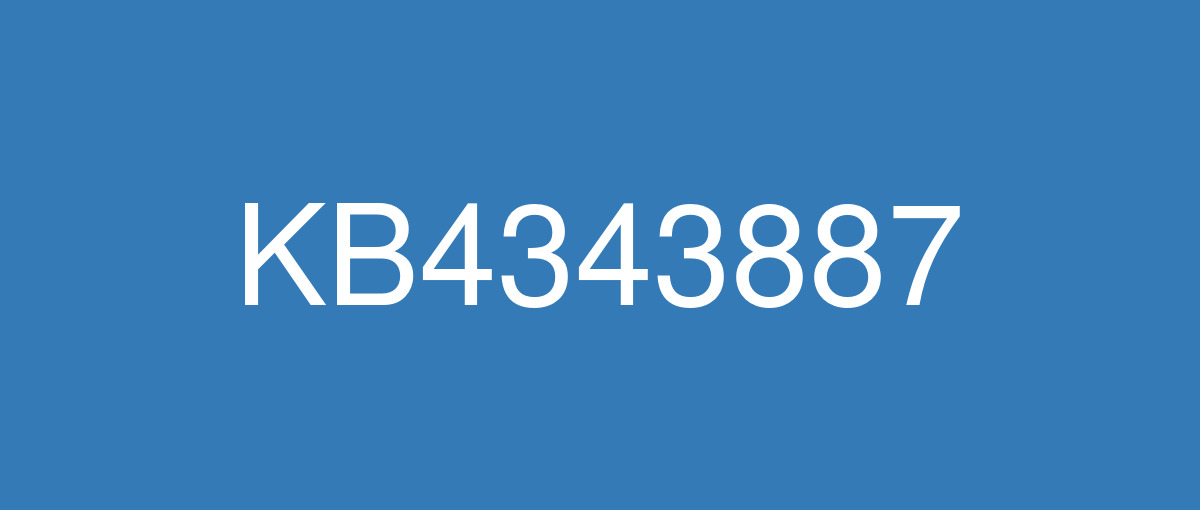KB4343887

詳細情報
| KB番号 | KB4343887 |
|---|---|
| リリース日 | 2018/08/14 |
| Windowsバージョン | Windows 10 1607 |
| ビルド番号 | 14393.2430 |
| URL | https://support.microsoft.com/en-us/help/4343887 |
| ダウンロード | Microsoft Update Catalog |
ハイライト
改良点
Provides protections against a new speculative execution side-channel vulnerability known as L1 Terminal Fault (L1TF) that affects Intel® Core® processors and Intel® Xeon® processors (CVE-2018-3620 and CVE-2018-3646). Make sure previous OS protections against Spectre Variant 2 and Meltdown vulnerabilities are enabled using the registry settings outlined in the Windows Client and Windows Server guidance KB articles. (These registry settings are enabled by default for Windows Client OS editions, but disabled by default for Windows Server OS editions.)
Addresses an issue that causes high CPU usage that results in performance degradation on some systems with Family 15h and 16h AMD processors. This issue occurs after installing the June 2018 or July 2018 Windows updates from Microsoft and the AMD microcode updates that address Spectre Variant 2 (CVE-2017-5715 – Branch Target Injection).
Addresses an issue that causes Internet Explorer to stop working for certain websites.
Addresses an issue that causes Device Guard to block some ieframe.dll class IDs after installing the May 2018 Cumulative Update.
Ensures that Internet Explorer and Microsoft Edge support the preload="none" tag.
Addresses a vulnerability related to the Export-Modulemember() function when used with a wildcard (*) and a dot-sourcing script. After installing this update, existing modules on devices that have Device Guard enabled will intentionally fail. The exception error is “This module uses the dot-source operator while exporting functions using wildcard characters, and this is disallowed when the system is under application verification enforcement”. For more information, see https://portal.msrc.microsoft.com/en-US/security-guidance/advisory/CVE-2018-8200 and https://aka.ms/PSModuleFunctionExport.
Addresses a vulnerability issue by correcting the way that the .NET Framework handles high-load or high-density network connections. For more information, see CVE-2018-8360.
Security updates to Windows Server.